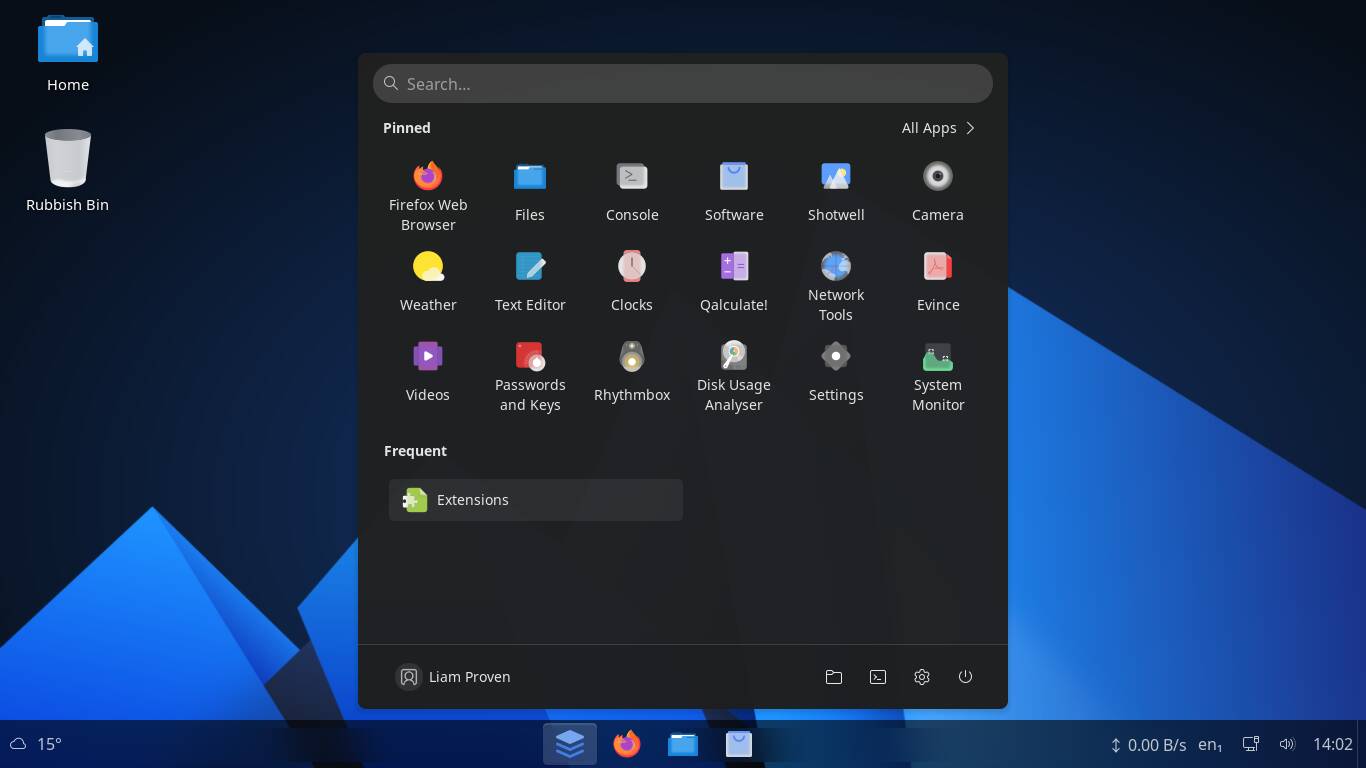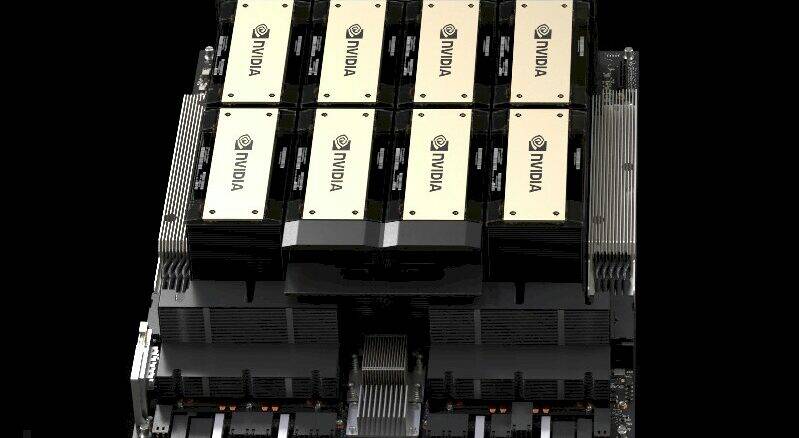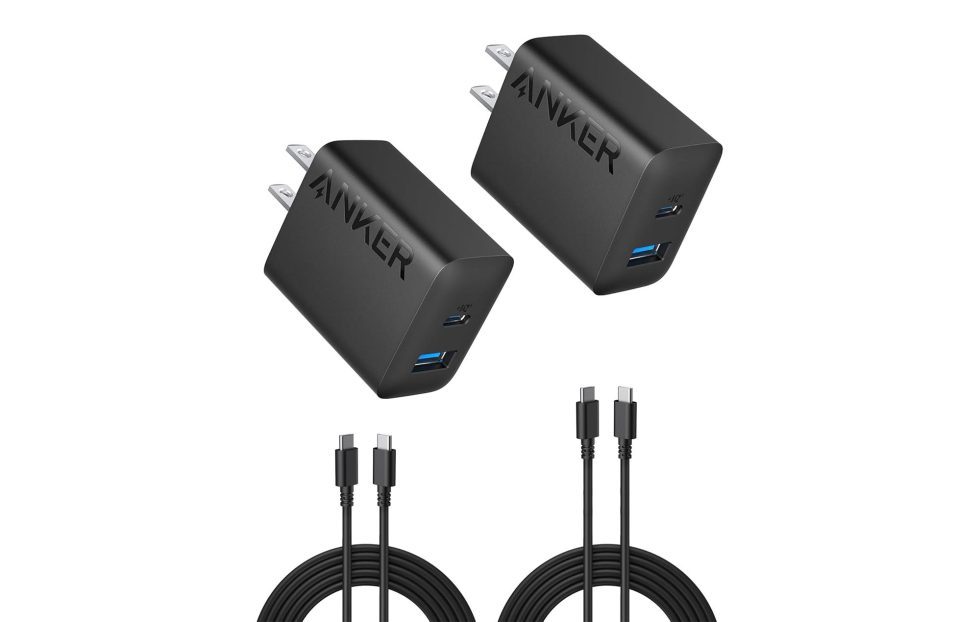The Anatomy of Go Slices
Slices in Go are a very powerful data structure, demonstrating particular flexibility and efficiency when dealing with dynamic arrays. Slices are a core data structure in Go, providing an abstraction over arrays that allows for flexible expansion and manipulation. Although slices are widely used in Go, many developers may not fully understand their underlying implementation, especially when it comes to performance tuning and memory management. This article will deeply analyze the underlying implementation principles of slices, helping you better understand how slices work in Go. What is a Slice? In Go, a slice is a dynamically sized array that offers a more flexible way to operate than arrays. A slice is essentially a reference to an array and can be used to access the elements of that array. Unlike arrays, the length of a slice can change dynamically. A slice consists of the following three parts: Pointer: Points to a certain position within the array. Length: The number of elements in the slice. Capacity: The number of elements from the position pointed to by the pointer to the end of the underlying array. // Example code arr := [5]int{1, 2, 3, 4, 5} slice := arr[1:4] // slice points to 2, 3, 4 in arr In this example, slice is a slice of length 3, pointing to part of the array arr. The elements of the slice are [2, 3, 4], the length is 3, and the capacity is 4 (from the start of the slice to the end of the array). The Underlying Structure of Slices Slice Implementation Structure Slices in Go are actually a struct. The simplified implementation is as follows: type slice struct { array unsafe.Pointer // Pointer to the underlying array len int // Length of the slice cap int // Capacity of the slice } array: This is a pointer to the underlying array. The slice does not directly copy the data of the array; instead, it references the underlying array’s data via this pointer. len: The current length of the slice, i.e., the number of elements contained in the slice. cap: The capacity of the slice, i.e., the number of elements from the starting position of the slice to the end of the underlying array. Slice Expansion and Reallocation When Does Expansion Happen? When using append() to add elements to a slice, if the current capacity (cap) is insufficient to hold new elements, an expansion is triggered: s := []int{1, 2, 3} s = append(s, 4) // Triggers expansion (assuming original capacity is 3) Core Expansion Rules Go’s expansion strategy is not simply a matter of “doubling” or “fixed ratio”; rather, it takes into account the element type, memory alignment, and performance optimization: Basic expansion rules: If the current capacity (oldCap) < 1024, the new capacity (newCap) = old capacity × 2 (double). If the current capacity ≥ 1024, new capacity = old capacity × 1.25 (increase by 25%). Memory alignment adjustment: The calculated newCap will be rounded up according to the size of the element type (et.size) for memory alignment, ensuring that the allocated memory block aligns with CPU cache lines or memory page requirements. For example: For a slice storing int64 (8 bytes), the resulting capacity may be adjusted to a multiple of 8. Source-Level Expansion Process The expansion logic resides in the runtime.growslice function (source file slice.go). The key steps are as follows: Calculate new capacity: func growslice(oldPtr unsafe.Pointer, newLen, oldCap, num int, et *_type) slice { newCap := oldCap doubleCap := newCap + newCap if newLen > doubleCap { newCap = newLen } else { if oldCap

Slices in Go are a very powerful data structure, demonstrating particular flexibility and efficiency when dealing with dynamic arrays. Slices are a core data structure in Go, providing an abstraction over arrays that allows for flexible expansion and manipulation.
Although slices are widely used in Go, many developers may not fully understand their underlying implementation, especially when it comes to performance tuning and memory management. This article will deeply analyze the underlying implementation principles of slices, helping you better understand how slices work in Go.
What is a Slice?
In Go, a slice is a dynamically sized array that offers a more flexible way to operate than arrays. A slice is essentially a reference to an array and can be used to access the elements of that array. Unlike arrays, the length of a slice can change dynamically.
A slice consists of the following three parts:
- Pointer: Points to a certain position within the array.
- Length: The number of elements in the slice.
- Capacity: The number of elements from the position pointed to by the pointer to the end of the underlying array.
// Example code
arr := [5]int{1, 2, 3, 4, 5}
slice := arr[1:4] // slice points to 2, 3, 4 in arr
In this example, slice is a slice of length 3, pointing to part of the array arr. The elements of the slice are [2, 3, 4], the length is 3, and the capacity is 4 (from the start of the slice to the end of the array).
The Underlying Structure of Slices
Slice Implementation Structure
Slices in Go are actually a struct. The simplified implementation is as follows:
type slice struct {
array unsafe.Pointer // Pointer to the underlying array
len int // Length of the slice
cap int // Capacity of the slice
}
- array: This is a pointer to the underlying array. The slice does not directly copy the data of the array; instead, it references the underlying array’s data via this pointer.
- len: The current length of the slice, i.e., the number of elements contained in the slice.
- cap: The capacity of the slice, i.e., the number of elements from the starting position of the slice to the end of the underlying array.
Slice Expansion and Reallocation
When Does Expansion Happen?
When using append() to add elements to a slice, if the current capacity (cap) is insufficient to hold new elements, an expansion is triggered:
s := []int{1, 2, 3}
s = append(s, 4) // Triggers expansion (assuming original capacity is 3)
Core Expansion Rules
Go’s expansion strategy is not simply a matter of “doubling” or “fixed ratio”; rather, it takes into account the element type, memory alignment, and performance optimization:
Basic expansion rules:
- If the current capacity (
oldCap) < 1024, the new capacity (newCap) = old capacity × 2 (double). - If the current capacity ≥ 1024, new capacity = old capacity × 1.25 (increase by 25%).
Memory alignment adjustment:
- The calculated
newCapwill be rounded up according to the size of the element type (et.size) for memory alignment, ensuring that the allocated memory block aligns with CPU cache lines or memory page requirements. - For example: For a slice storing
int64(8 bytes), the resulting capacity may be adjusted to a multiple of 8.
Source-Level Expansion Process
The expansion logic resides in the runtime.growslice function (source file slice.go). The key steps are as follows:
Calculate new capacity:
func growslice(oldPtr unsafe.Pointer, newLen, oldCap, num int, et *_type) slice {
newCap := oldCap
doubleCap := newCap + newCap
if newLen > doubleCap {
newCap = newLen
} else {
if oldCap < 1024 {
newCap = doubleCap
} else {
for newCap < newLen {
newCap += newCap / 4
}
}
}
// Memory alignment adjustment
capMem := et.size * uintptr(newCap)
switch {
case et.size == 1: // No alignment needed (e.g., byte type)
case et.size <= 8:
capMem = roundupsize(capMem) // Align to 8 bytes
default:
capMem = roundupsize(capMem) // Align to system page size
}
newCap = int(capMem / et.size)
// ... Allocate new memory and copy data
}
Key point: The actual expanded capacity may be greater than the theoretical value (e.g., when the element type is struct{...}).
Example Validation
Example 1: Expansion of int Type Slice
s := make([]int, 0, 3) // len=0, cap=3
s = append(s, 1, 2, 3, 4)
// Original capacity 3 is insufficient, calculate newCap=3+4=7 → double to 6 → after alignment still 6 → final cap=6
fmt.Println(cap(s)) // Outputs 6 (not 7!)
Example 2: Expansion of Struct Type
type Point struct{ x, y, z float64 } // 24 bytes (8*3)
s := make([]Point, 0, 2)
s = append(s, Point{}, Point{}, Point{})
// Original capacity 2 is insufficient, calculate newCap=5 → adjust for alignment to 6 → final cap=6
fmt.Println(cap(s)) // Outputs 6
Post-Expansion Behavior
Underlying Array Changes:
- After expansion, the slice’s pointer points to a new underlying array, and the original array is no longer referenced (and may be reclaimed by the GC).
- Important implication: Appending a slice within a function may result in decoupling from the original slice (depending on whether expansion is triggered).
Performance Optimization Suggestions:
-
Pre-allocate Capacity: When initializing with
make([]T, len, cap), specify sufficient capacity to avoid frequent expansion. - Avoid frequent small appends: When processing data in bulk, allocate enough space at once.
Expansion Pitfalls
Pitfall 1: Append in a Function Not Returned
func modifySlice(s []int) {
s = append(s, 4) // Triggers expansion, s points to new array
}
func main() {
s := []int{1, 2, 3}
modifySlice(s)
fmt.Println(s) // Outputs [1 2 3], does not include 4!
}
Reason: After expansion in the function, the new slice is separated from the original slice’s underlying array.
Pitfall 2: The Cost of Expanding Large Slices
var s []int
for i := 0; i < 1e6; i++ {
s = append(s, i) // Multiple expansions, resulting in O(n) copy operations
}
Optimization: Pre-allocate capacity with make([]int, 0, 1e6).
Summary
The expansion mechanism of slices balances memory usage and performance overhead through dynamic adjustment of capacity. Understanding the underlying logic helps you:
- Avoid performance degradation due to frequent expansions.
- Predict behavioral differences when passing slices between functions.
- Optimize performance in memory-intensive applications.
In real-world development, it is recommended to use cap() to monitor slice capacity changes and analyze memory allocation with the pprof tool to ensure efficient memory usage.
Memory Layout and Pointers
Slices reference the data in the underlying array via pointers. A slice itself does not hold a copy of the array, but accesses the underlying array through a pointer. This means that multiple slices can share the same underlying array, but each slice has its own length and capacity.
If you modify an element in the underlying array, all slices referencing that array will see the change.
arr := [5]int{1, 2, 3, 4, 5}
slice1 := arr[1:4]
slice2 := arr[2:5]
slice1[0] = 100
fmt.Println(arr) // Outputs [1, 100, 3, 4, 5]
fmt.Println(slice2) // Outputs [3, 4, 5]
In the above code, slice1 and slice2 both point to different parts of the array arr. When we modify an element in slice1, the underlying array arr is changed, so the values in slice2 are also affected.
Slice Memory Management
Go is very smart in terms of memory management. It manages the memory used by slices through garbage collection (GC). When a slice is no longer used, Go will automatically clean up the memory it occupies.
However, expanding the capacity of a slice is not free. Every time a slice is expanded, Go allocates a new underlying array and copies the contents of the original array into the new array. This can cause performance degradation. Especially when processing large amounts of data, frequent expansion will result in performance loss.
Memory Copying and GC
When a slice is expanded, the underlying array is copied to a new memory location, which involves the overhead of memory copying. If a slice becomes very large or expansions happen frequently, it may negatively impact performance.
To avoid unnecessary memory copying, you can use the cap() function to estimate the capacity of a slice and control the expansion strategy when using append.
// Pre-allocate enough capacity to avoid multiple expansions
slice := make([]int, 0, 1000)
for i := 0; i < 1000; i++ {
slice = append(slice, i)
}
By pre-allocating enough capacity, you can avoid multiple expansion operations and improve performance.
Performance Optimization for Slices
Although Go slices are very flexible, if you are not careful, they can also lead to performance issues. Here are some optimization tips:
-
Pre-allocate capacity: As shown above, use
make([]T, 0, cap)to pre-allocate enough capacity, which can prevent frequent expansions when inserting large amounts of data. - Avoid unnecessary copies: If you only need to operate on part of a slice, use slice operations instead of creating new arrays or slices. This avoids unnecessary memory copying.
- Batch operations: Whenever possible, try to process multiple elements of a slice at once, rather than making small modifications frequently.
Summary
Slices are a very important and flexible data structure in Go. They provide more powerful dynamic operations than arrays. By understanding the underlying implementation of slices, you can better leverage Go’s memory management and performance optimization techniques to write efficient code.
- Slices reference arrays through pointers and manage data through length and capacity.
- Expansion is implemented by creating a new underlying array, often doubling the capacity.
- For performance optimization, it is recommended to pre-allocate slice capacity to avoid frequent expansion.
- Go’s garbage collector will automatically manage the memory used by slices, but efficient use of memory still requires attention.
By understanding these underlying details, you can use slices more efficiently in development and avoid potential performance issues.
We are Leapcell, your top choice for hosting Go projects.
Leapcell is the Next-Gen Serverless Platform for Web Hosting, Async Tasks, and Redis:
Multi-Language Support
- Develop with Node.js, Python, Go, or Rust.
Deploy unlimited projects for free
- pay only for usage — no requests, no charges.
Unbeatable Cost Efficiency
- Pay-as-you-go with no idle charges.
- Example: $25 supports 6.94M requests at a 60ms average response time.
Streamlined Developer Experience
- Intuitive UI for effortless setup.
- Fully automated CI/CD pipelines and GitOps integration.
- Real-time metrics and logging for actionable insights.
Effortless Scalability and High Performance
- Auto-scaling to handle high concurrency with ease.
- Zero operational overhead — just focus on building.
Explore more in the Documentation!
Follow us on X: @LeapcellHQ

















































































































































































![[The AI Show Episode 148]: Microsoft’s Quiet AI Layoffs, US Copyright Office’s Bombshell AI Guidance, 2025 State of Marketing AI Report, and OpenAI Codex](https://www.marketingaiinstitute.com/hubfs/ep%20148%20cover%20%281%29.png)


![[The AI Show Episode 146]: Rise of “AI-First” Companies, AI Job Disruption, GPT-4o Update Gets Rolled Back, How Big Consulting Firms Use AI, and Meta AI App](https://www.marketingaiinstitute.com/hubfs/ep%20146%20cover.png)


























































































































![Laid off but not afraid with X-senior Microsoft Dev MacKevin Fey [Podcast #173]](https://cdn.hashnode.com/res/hashnode/image/upload/v1747965474270/ae29dc33-4231-47b2-afd1-689b3785fb79.png?#)





















































































































_MEGHzTK.png?width=1920&height=1920&fit=bounds&quality=70&format=jpg&auto=webp#)
-1-52-screenshot.png?width=1920&height=1920&fit=bounds&quality=70&format=jpg&auto=webp#)




















_David_Hall_-Alamy.jpg?width=1280&auto=webp&quality=80&disable=upscale#)
_Andriy_Popov_Alamy_Stock_Photo.jpg?width=1280&auto=webp&quality=80&disable=upscale#)





















































































-xl.jpg)







![[Open Thread] Google may have changed the face of visual media forever, but is it for the good?](https://www.androidauthority.com/wp-content/uploads/2025/04/Veo-2-in-Gemini-on-an-Android-phone-scaled.jpg)























![Apple Shares Official Trailer for Season 2 of 'The Buccaneers' [Video]](https://www.iclarified.com/images/news/97414/97414/97414-640.jpg)
![Apple Highlights Ceramic Shield, Stolen Device Protection, and More in New Ads [Video]](https://www.iclarified.com/images/news/97416/97416/97416-640.jpg)






































































